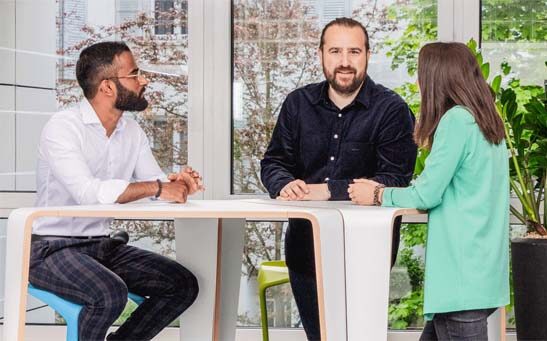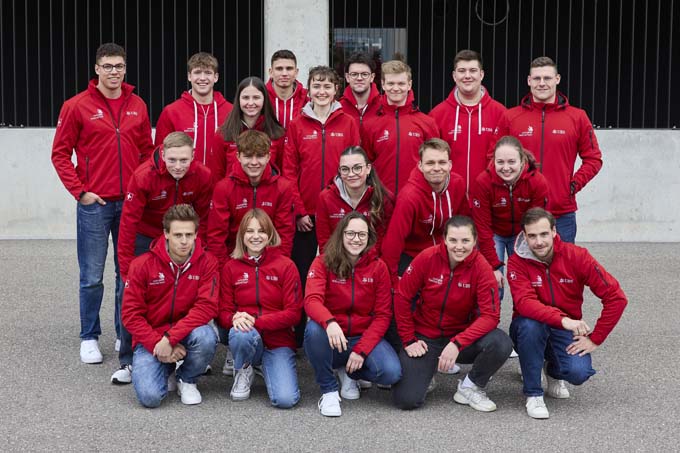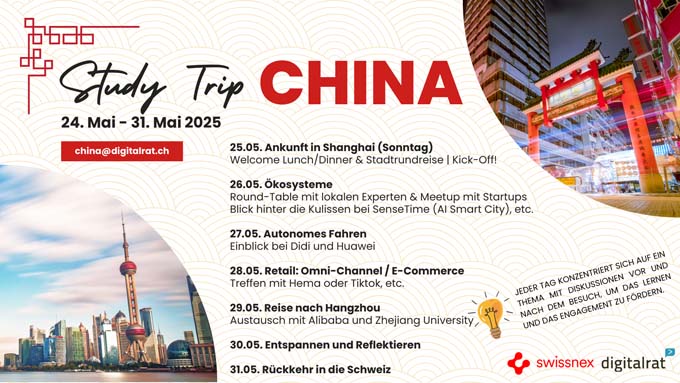How startups and established companies learn from each other
Established companies and young start-ups are often associated with "typical" characteristics: start-ups are usually good at developing innovative ideas and prototypes, while established companies have the necessary resources to implement them. These and other "typical" characteristics are the focus of the SME Mirror 2020 of the FHS St.Gallen.

Very different strengths and weaknesses are often associated with established companies and young start-ups. Start-ups are usually good at developing innovative ideas and prototypes, but often have difficulties in marketing their services and rarely experience scaling their business model. Established companies, on the other hand, usually fail to develop and successfully implement radically new ideas and ventures. However, they have access to sales channels, well-established processes, and financial resources for developing products and personnel with a wide range of qualifications. Routine, industry knowledge and business expertise on the one hand, speed, flexibility and a willingness to experiment on the other, at least according to the perceptions of Swiss managers and employees.
These are some of the key findings of the SME Mirror 2020, which is published annually by the Institute of Management IFU-FHS at the FHS St.Gallen. The KMU-Spiegel examines practical issues that are of particular interest to small and medium-sized enterprises (SMEs) and could be carried out thanks to the financial support and content support of Helvetia Insurance and BDO Switzerland.
Innovative but inefficient or efficient but operationally blind?
More than 70% of the respondents agree that the greatest strengths of startups lie primarily in tackling new things, developing innovative solutions and bringing them to market. However, the flip side of being innovative is often a simultaneous lack of financial resources and lower efficiency and profitability. The opposite is true for established companies. Their strength lies in consistency and in making efficient use of what already exists. However, these capabilities often come at the expense of innovation and flexibility. The participants in the study emphasize, however, that innovations can also take place in established companies. But these often get in their own way. "The focus of mature companies is often on day-to-day business, which generates profit and with which a wealth of experience has been built up," says Prof. Dr. Petra Kugler of IFU-FHS and co-author of the study. In the longer term, routine, sometimes also entrenched patterns of thought and behavior develop; a "business blindness". Especially successful companies operating in a stable environment have no incentive to deviate from the tried and true. "However, if the situation of mature companies changes, then new solutions are also needed," adds Kugler. Which also succeeds, according to one participant in the study, because "established companies are also capable of finding radical solutions, but only in critical situations where it is unavoidable."
Innovations are then not understood as a continuous process, but rather as an intermittent necessity. Because of the different strengths and weaknesses, different support services are also needed. "The need for consulting services of start-ups and established companies differs fundamentally. However, we find that digitization is a key issue for both startups and established companies. Especially for start-ups, digital technologies are often the basis for innovative solutions," adds Stefan Gerber, Head of Markets, BDO Switzerland.
When startups and established companies work together, both can win
The perceptions of the study participants coincide with numerous findings of the scientific community. Thus, young and mature companies complement each other in terms of their respective strengths and weaknesses. "However, both categories of companies find it difficult to implement the strengths of the other category without losing their own identity," says Prof. Dr. Rigo Tietz, co-author and project manager of the study. The challenge is to maintain the respective strengths and yet learn from the other side in order to benefit from both worlds. Different options are available for this, he says: While young companies gradually become more stable with increasing success, mature companies have agile processes or flexible working methods at their disposal, among other things. Or collaboration is the goal.
By means of cooperation between young and mature companies, targeted learning processes can be initiated or existing strengths can be leveraged. "At Helvetia, we work intensively with various start-ups. We have also found that collaboration is very valuable for both sides and that we often complement each other well. The prerequisite for this is that both sides are open and want to learn from each other," Adrian Kollegger, Head of Non-Life, Helvetia Switzerland, reports on his experience.
More information: www.fhsg.ch/kmu-spiegel









